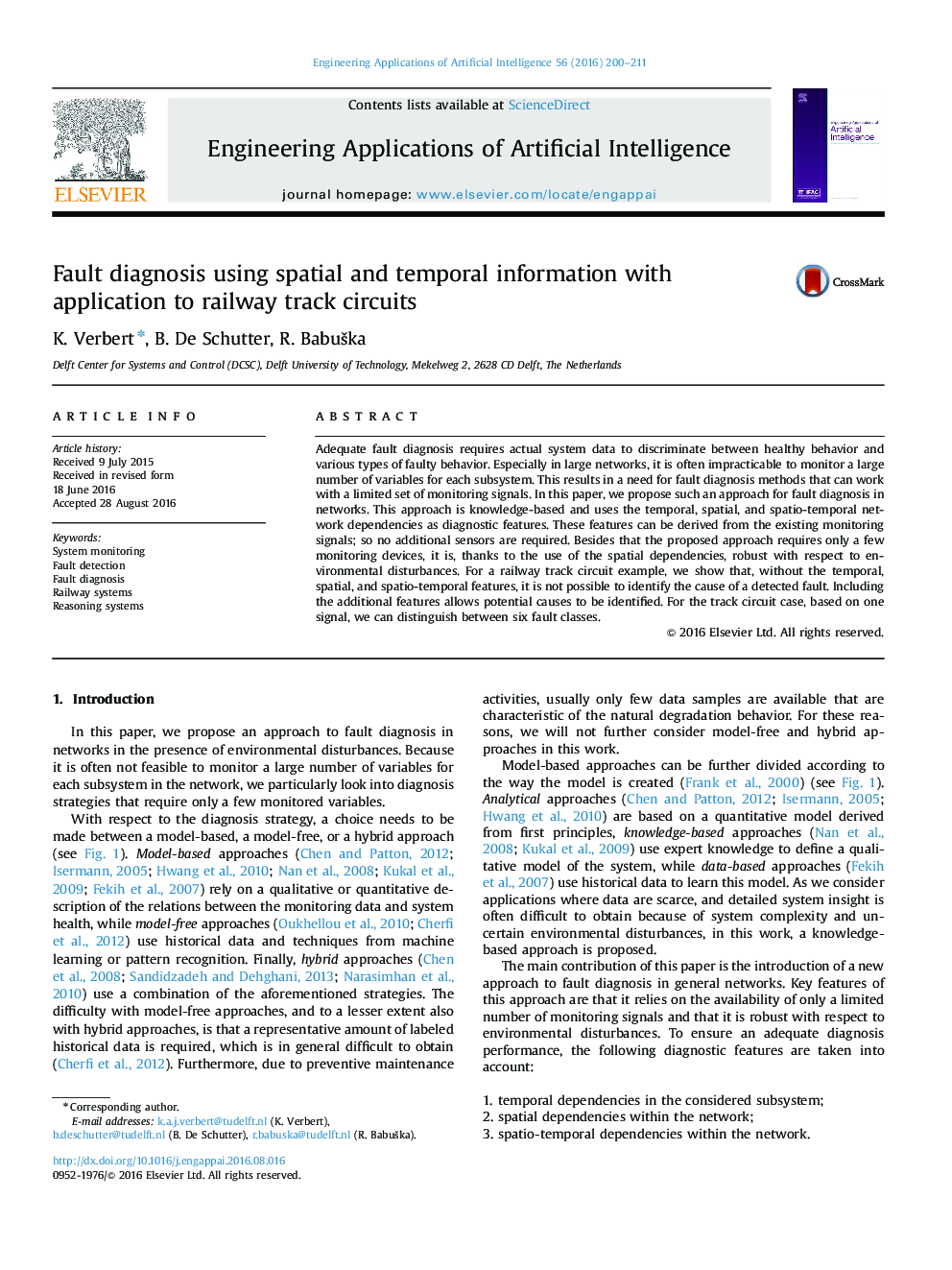| Article ID | Journal | Published Year | Pages | File Type |
|---|---|---|---|---|
| 4942836 | Engineering Applications of Artificial Intelligence | 2016 | 12 Pages |
Abstract
Adequate fault diagnosis requires actual system data to discriminate between healthy behavior and various types of faulty behavior. Especially in large networks, it is often impracticable to monitor a large number of variables for each subsystem. This results in a need for fault diagnosis methods that can work with a limited set of monitoring signals. In this paper, we propose such an approach for fault diagnosis in networks. This approach is knowledge-based and uses the temporal, spatial, and spatio-temporal network dependencies as diagnostic features. These features can be derived from the existing monitoring signals; so no additional sensors are required. Besides that the proposed approach requires only a few monitoring devices, it is, thanks to the use of the spatial dependencies, robust with respect to environmental disturbances. For a railway track circuit example, we show that, without the temporal, spatial, and spatio-temporal features, it is not possible to identify the cause of a detected fault. Including the additional features allows potential causes to be identified. For the track circuit case, based on one signal, we can distinguish between six fault classes.
Related Topics
Physical Sciences and Engineering
Computer Science
Artificial Intelligence
Authors
K. Verbert, B. De Schutter, R. Babuška,
